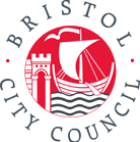We must reconsider the dominance of cars on most of Bristol's streets
Dr Suzanne Audrey is senior research fellow in public health at the University of Bristol with an interest in the health benefits of walking. She is co-director of the SHINE HIT.
- 30th October 2018
Dr Suzanne Audrey is senior research fellow in public health at the University of Bristol with an interest in the health benefits of walking. She is co-director of the Supporting Healthy Inclusive Neighbourhood Environments (SHINE) Health Integration Team and a founder member of Bristol Walking Alliance, a consortium of organisations and individuals campaigning to create a walking environment in Bristol that is welcoming, safe, convenient and inclusive.
For many pedestrians in Bristol, the experience of crossing the road can range from being slightly irritating or time-consuming, to being downright frightening and even dangerous.
Little is said in the media about this commonplace activity unless someone is killed or seriously injured and, even then, it may slip down the headline
In 2017, 470 pedestrians were killed on Britain’s roads. Of these, 22 were children and 216 were aged 60 and over. In the same year there were 23,805 pedestrian casualties, of whom 37 per cent were children and 18 per cent were aged 60 and over. Most of these happened as pedestrians were crossing the road, and most were hit by a car.
So how is Bristol doing? The latest figures I could find were from Bristol City Council’s Road Casualties Review for 2015, which reported two pedestrian fatalities and 204 injuries for that year.
It’s worth remembering that not all incidents where a minor injury is involved are reported and the number of ‘near misses’, while causing concern to those involved, remains a mystery.
There may be some who think Bristol’s figures aren’t too bad – ‘only two deaths’ in a year – given how busy the roads are.
But, as Vision Zero campaigners are swift to point out, please put up your hand if you are willing to sacrifice yourself or someone you love, rather than reconsider the current dominance of motorised traffic on most of Bristol’s streets.
Vision Zero has a clear principle: “life and health can never be exchanged for other benefits within a society”. This contrasts with a system that calculates a monetary value on life and health and weighs it up against the costs of making changes to a road network to decrease risk.
The implication is that a few deaths and injuries a year are considered value for money if it keeps motorised traffic flowing.
Being killed and suffering injuries are not the only health issues that relate to crossing the road. Another important factor is ‘community severance’. This is when wide or busy roads, where motorised traffic is prioritised, making it difficult for people to get out and about in their communities.
This affects their health and wellbeing: physical activity is reduced, children are less likely to be ‘independently mobile’ as are older and disabled people, social networks are restricted, air quality suffers, access to goods and services is compromised, and the use of streets as social spaces for residents is undermined.
Community severance is at its worst where there aren’t enough road crossings, where the crossings (including underpasses and bridges) are inaccessible or perceived as unsafe, where light controls impose long waiting times before pedestrians can cross, and when people aren’t given enough time to cross the road safely.
Walking is, in theory, at the top of Bristol’s transport hierarchy. But in recent years Bristol City Council has cut the number of school crossing patrols and restricted spending on pedestrian crossings in local neighbourhoods.
Nevertheless, there are officers in the transport and planning departments who are working towards improving the infrastructure for pedestrians.
Bristol’s draft Transport Strategy, which is out for consultation, includes the aim that walking will be “safe, pleasant, accessible and the first choice for local journeys and combined with public transport for longer journeys”.
If you agree, then I hope you will support this aim by responding to the council’s consultation.






